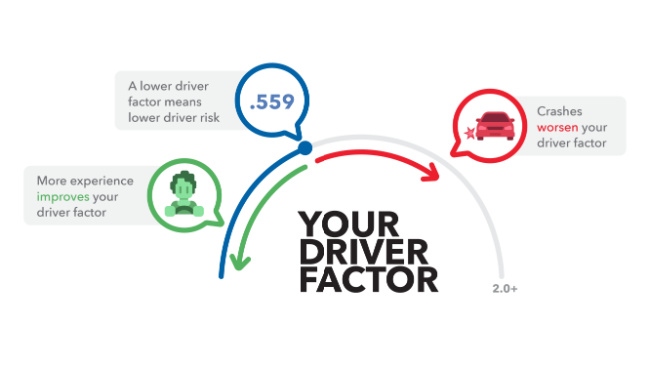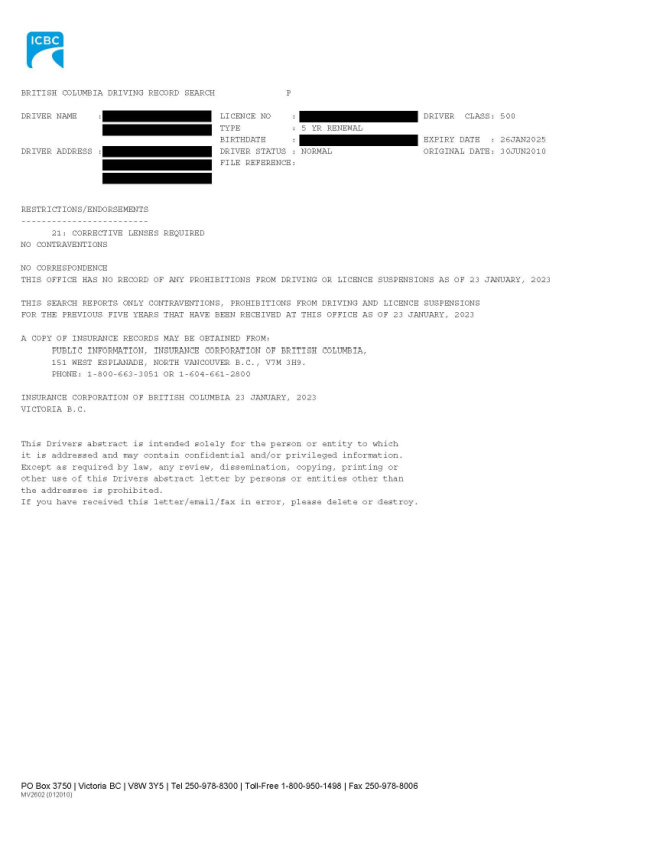Driving records, also known as your driver’s abstract, is a record of your driving history including any driving tickets you’ve received or driving offences connected to your licence over the last five years. A driver’s abstract also lists when your driver’s licence was issued and how long you’ve had it for.

There are four different types of records offered by ICBC. These records are the driver’s abstract, an insurance and claims history record, a driver factor report, and a commercial driving record. We’ll cover what each one of these are so you know what to seek out if it’s needed!
What is a driver’s abstract?
Your driving record (driver’s abstract) is a public record of your driving. It’s valid for five years, and can be used to apply for a driver’s licence when you move out of British Columbia. A valid driving record is typically required in order to become a member of any car-sharing companies or to volunteer driving for school activities.
The ICBC driving record will include any contraventions, prohibitions from driving, and licence suspensions from the last five years. Contraventions include driver penalty points and non-criminal offences.
What are driver penalty points?
Driver penalty points are collected on your driving record from the time you get your licence and are based on traffic offences. Each offence carries a certain amount of points, and each year ICBC reviews each driver’s points for a 12-month period during what they call your “assessment period.” If you collect more than three points on your driving record during the assessment period, you'll pay a Driver Penalty Point (DPP) premium. The premium ranges from $252 for four points to $34,560 for 50 or more points.
Some offences may apply to both the DPP program and the Driver Risk Premium (DRP). You will be billed once per year under the program that results in the higher premium. The DRP is calculated just before your assessment period and is based on your offences from the previous three years.
You can reduce the cost of the DRP by giving up your licence for an entire billing period or at least 30 days during a billing period.
What are licence suspensions?
Some driving infractions fall under the Criminal Code of Canada, and, in this case, a BC driver’s licence can be suspended for one year, three years, or indefinitely, based on the driving record. The one-year or three-year suspensions cannot be reduced or appealed, however, the indefinite suspension may be reduced if the driver meets certain requirements and has already served five years of the suspension. Driver’s are required to surrender their physical licence to ICBC if it has been suspended.
Following a one-year suspension, drivers can reapply for their licence by paying any outstanding fines or debts they owe to the court or government, as well as any amounts owed to ICBC. Any other requirements must be served, such as the Remedial Driver Program, to the satisfaction of the Office of the Superintendent of Motor Vehicles. Driver’s must also pay the short-term driver's licence fee and the reinstatement fee. If a driver has been suspended for three or more years, they must also complete a re-examination road test.
What is an insurance and claims history record?
The insurance and claims history record will show the policy numbers and terms that have been attached to a driver’s name since 2005. Drivers will also find their recorded claims with more than 25% responsibility, for the past 20 years. This will show a breakdown of the loss including the date, loss type, and payments made.

This record should be attained when moving out of the province and planning to apply for auto insurance. Having this record is necessary as the next insurer will likely ask to see this record for an insurance coverage history and claims history as a driver.
What is a driver factor report?

Every driver in BC has a driver factor report. The driver factor report is a three-decimal number that represents your driving experience and history, also taking into account whether you’re a senior or a new resident. The driver factor has a baseline of 1.000 and the goal is to have a low number. For example, a driver with a class 5 licence and almost 30 years driving experience and a minor collision 15 years ago could have a driver factor of .521. Another example: a driver with a class 7 licence and about 5 years experience could have a .769 driverfactor.

The driver factor improves as driving experience is gained and for each year that the driver remains claims and crash-free. When multiple drivers are listed for a vehicle, ICBC will combine the driver factor from all drivers to determine the insurance rates.
What is a commercial driving record?
A commercial driving record is often required when applying for commercial driving work. The commercial driving record is called the National Safety Code (NSC) abstract, and shows the basic driving history and any commercial vehicle-related convictions. Like a regular driving record the NSC abstract, also known as the (N) print, covers the last five years of driving history.

Some employers may ask for the commercial driving record as well as other available ICBC documents.
–
All of these driving records can be acquired through ICBC’s website. In most cases, they arrive via email in a matter of minutes and you can also request the documents be sent to another organization as well. Even if you aren’t actively seeking out employment, keeping an eye on your driving records can keep you informed and up-to-date with your driving journey!
